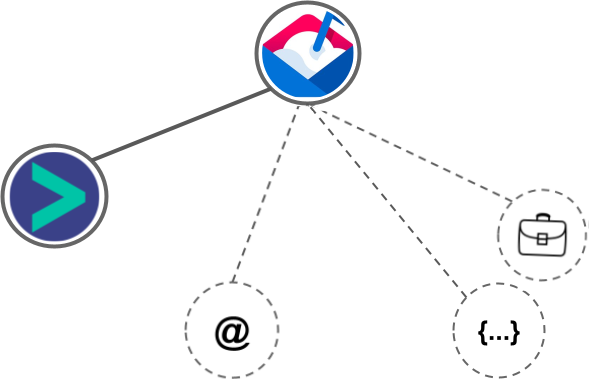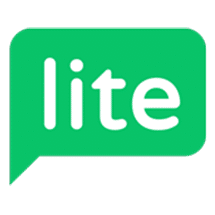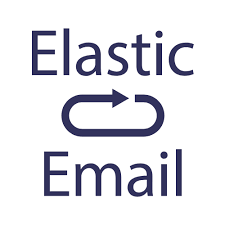Mailshake vs Apollo.io
Hyperise integrates with 100's of sales and marketing tools, many of which are in the Email Marketing category. With so many to choose from it's sometimes hard to know which is best, but don't worry, we've got your covered.
In this comparison guide we're going to look at the Highlights, Pros, Cons and Pricing of Mailshake and Apollo.io. We'll also delve into the details of which offers the best personalization options within Email Marketing, with there respective Hyperise integrations

Mailshake
Pricing: MailShake has a tiered pricing system based on the number of users and email sends per month. The plans range from $29/month for the “Starter” plan with one user and up to 1,500 email sends to $99/month for the “Agency” plan with up to 10 users and 20,000 email sends. There is also a custom Enterprise plan available for larger companies with more advanced needs, which requires contacting MailShake for pricing.Vs

Apollo.io
Pricing: Apollo offers three pricing plans: Starter, Professional, and Enterprise. The Starter plan costs $19 per user per month (billed annually) and includes basic features such as contact management, email campaigns, and basic reporting. The Professional plan costs $49 per user per month (billed annually) and includes more advanced features such as lead scoring, custom dashboards, and integrations with sales tools like Salesforce and Slack.
Mailshake vs Apollo.io Highlights
Mailshake is a web-based email outreach platform designed to help small businesses, marketers, and entrepreneurs reach out to potential leads and customers. Apollo is an entirely different kind of tool. It is an AI-powered tool that suggests relevant influencers, content, and solutions for marketing teams. It also provides deep analytics to measure the effectiveness of campaigns and messaging. Mailshake is focused on helping businesses reach out to potential customers through effective email strategies, while Apollo is geared towards helping marketers discover the best influencers, content, and solutions for their campaigns.
Mailshake vs Apollo.io Pros
Mailshake Pros
- MailShake has a more affordable pricing with plans starting at $19/month compared to Apollo's $99/month starting price.
- MailShake has an easier to use interface, making it easier for users to navigate
- MailShake has a more intuitive email campaign creation process
- MailShake provides more detailed recipient analytics and tracking compared to Apollo
- MailShake allows for custom email templates, while Apollo offers limited template options
- MailShake has a simpler and more user-friendly email outreach automation process.
Apollo.io Pros
- Here are the pros of Apollo compared to Mailshake:
- More advanced CRM features built-in, including lead scoring and segmentation.
- Powerful integrations with sales automation tools like Zapier to streamline workflows.
- Advanced reporting and analytics, including custom reports and dashboards.
- Better customer support and resources, including personalized onboarding and training.
- More robust email deliverability features, including spam testing and inbox placement testing.
- Lower overall cost and more flexible pricing options.
- More intuitive user interface and easier to use for beginners.
- Please note that these pros are based on general comparisons between the two tools and may not be accurate or applicable for all use cases.
Mailshake vs Apollo.io Cons
Mailshake Cons
- Limited integration options: MailShake has fewer integration options compared to Apollo, making it less flexible when it comes to integrating with other tools.
- No built-in calendaring: MailShake does not offer built-in calendaring functionality, which can be essential for scheduling meetings and appointments.
- Limited outreach features: While MailShake is excellent for sending personalized emails and tracking responses, it lacks some of the advanced outreach features found in Apollo, such as social media engagement and SMS messaging.
- Limited Reporting: MailShake's reporting capabilities are not as advanced or detailed as those of Apollo, making it harder for users to gain insights into their outreach activities.
- No Multiple Sequences: MailShake does not offer the ability to create multiple sequences within a single campaign, which can be a significant limitation for users.
- No Email preview feature: MailShake does not allow you to preview your emails in a desktop or mobile client, and you may only have to rely on the integrated editor preview.
Apollo.io Cons
- Apollo's pricing is not transparent and can be confusing for users who want to upgrade or cancel their plan
- Apollo's UI can sometimes be overwhelming for new users who are not familiar with the layout
- Apollo lacks features such as email scheduling and CRM integration that are available in MailShake
- Apollo's reporting and analytics capabilities are limited compared to MailShake's detailed tracking and reporting features
- Apollo does not offer a free trial or a free plan for users to test the platform before committing to a paid subscription.
Mailshake & Apollo.io Hyperise Integrations
Mailshake uses the Image embed method to integrate with Hyperise, giving a simple way to add personalized images to your messages.
Mailshake makes the following data points available to Hyperise, to enable personalization in images used in outreach and linked out to your personalized website landing pages.

- Using business Email passed from Mailshake, Hyperise is able to enrich business logo and website screenshots. In some cases, with a business Email we're also able to enrich profile images, subject to the business email having a publicly available profile.
- Business name
Mailshake Integration Guide
Apollo.io uses the HTML code embed method to integrate with Hyperise, giving a simple way to add personalized images to your messages.
Apollo.io makes the following data points available to Hyperise, to enable personalization in images used in outreach and linked out to your personalized website landing pages.

- Using business Email passed from Apollo.io, Hyperise is able to enrich business logo and website screenshots. In some cases, with a business Email we're also able to enrich profile images, subject to the business email having a publicly available profile.
- Using business Website passed from Apollo.io, Hyperise is able to enrich business logo and website screenshots.
- Business name
- Job title
- Category
- City
- Country
- State
Apollo.io Integration Guide
 vs
vs 

 vs
vs  vs
vs  vs
vs  vs
vs  vs
vs  vs
vs  vs
vs  vs
vs 
 vs
vs 
 vs
vs  vs
vs  vs
vs  vs
vs  vs
vs  vs
vs  vs
vs  vs
vs  vs
vs  vs
vs  vs
vs 
 vs
vs 





 vs
vs 
















